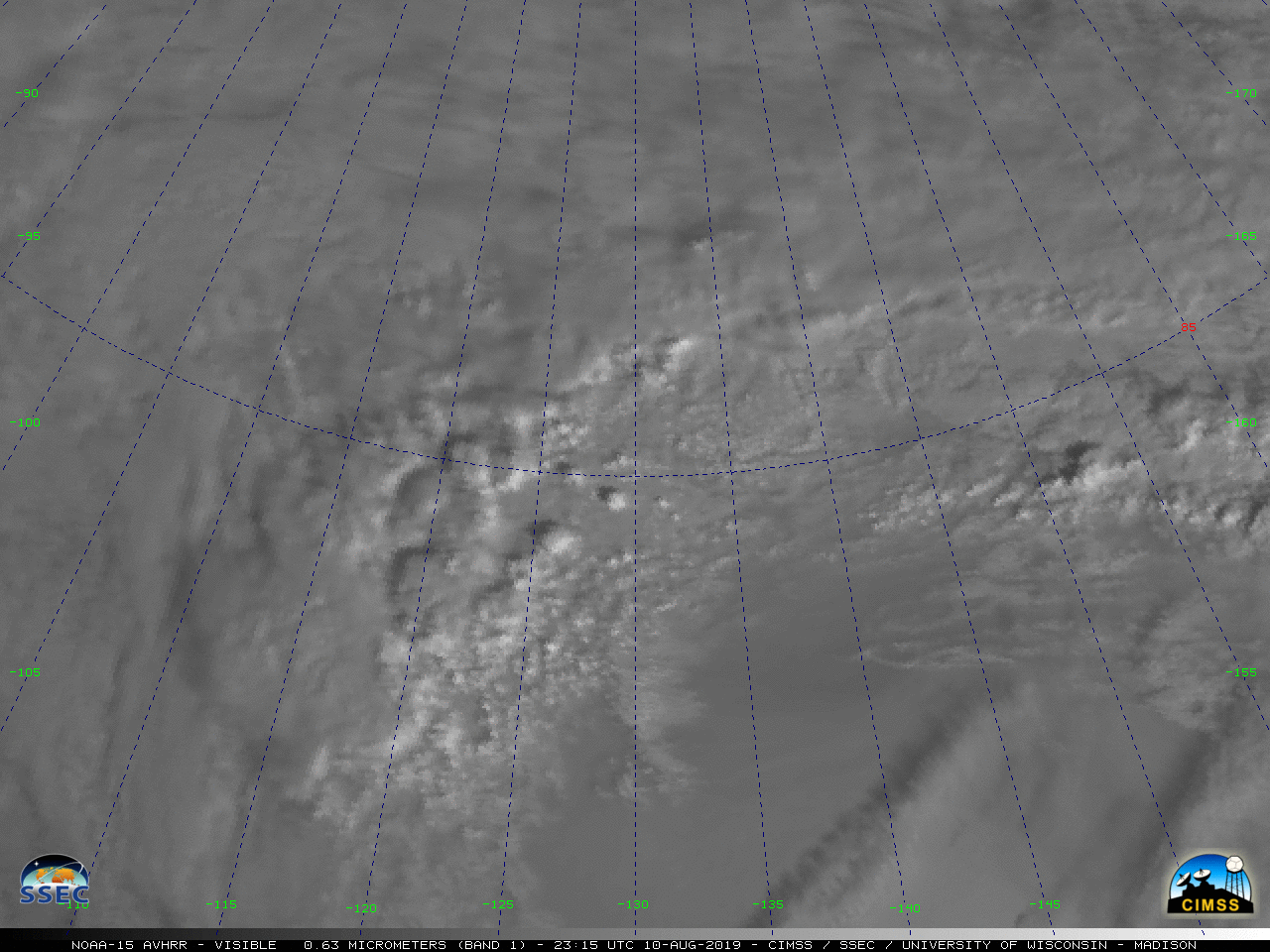Rare lightning near the North Pole

Lightning was detected near the North Pole on the weekend in a rare display of polar thunderstorms.
A number of lightning strikes occurred within 500 kilometres of the North Pole on Saturday, according to the U.S. National Weather Service (NWS). These polar strikes were detected over the Arctic Ocean near 85 degrees north, 120 degrees east by Vaisala's Global Lightning Detection (GLD) network.

Image: Satellite and lightning detection data showing thunderstorms near the North Pole on Saturday. Source: NOAA/NWS Fairbanks
While lightning is known to occur from time-to-time at high latitudes inside the arctic circle, it's incredibly rare for it to be witnessed this close to the North Pole.
It's not possible to know if this event is unprecedented because lightning detection is a relatively new technology, particularly in our planet's polar regions. Global-scale satellite lightning detection has only been possible since the 1960s, although the more useful high-resolution lightning data has only been available since the 1990s. Vaisala's Global Lightning Detection dataset only dates back to 2009.
Despite these short historical records, a public information statement issued by the NWS on Saturday said that this was "one of the furthest north lightning strikes in Alaska Forecaster memory."

Image: Satellite imagery showing thunderstorms propagating eastwards (left to right) on Saturday. Source: NOAA/CIMSS
Lightning is rare near Earth's poles because of the incredibly cold air near the surface. Thunderstorms occur when relatively warm, moisture-laden air in the low to mid levels of the atmosphere rises into cooler air aloft. This process gives rise to the towering cumulonimbus clouds that create lightning.
It's likely that a layer of relatively warm air in the lower or mid level of the atmosphere gave rise to Saturday's storms near the North Pole. Above-average sea surface temperatures in the Arctic Ocean may have also contributed to the storm's development. Impressively, satellite-measured cloud temperatures were as low as -49.9ºC at the top of Saturday's polar thunderstorms.

Image: Average yearly lightning flash density. Source: NASA
Most of the lightning on Earth occurs closer to the equator and over land, where surface heating is maximised during the day. According to a recent study, the most lightning-active location on earth is Lake Maracaibo in Venezuela, where a unique environment allows thunderstorms to develop 297 days per year.